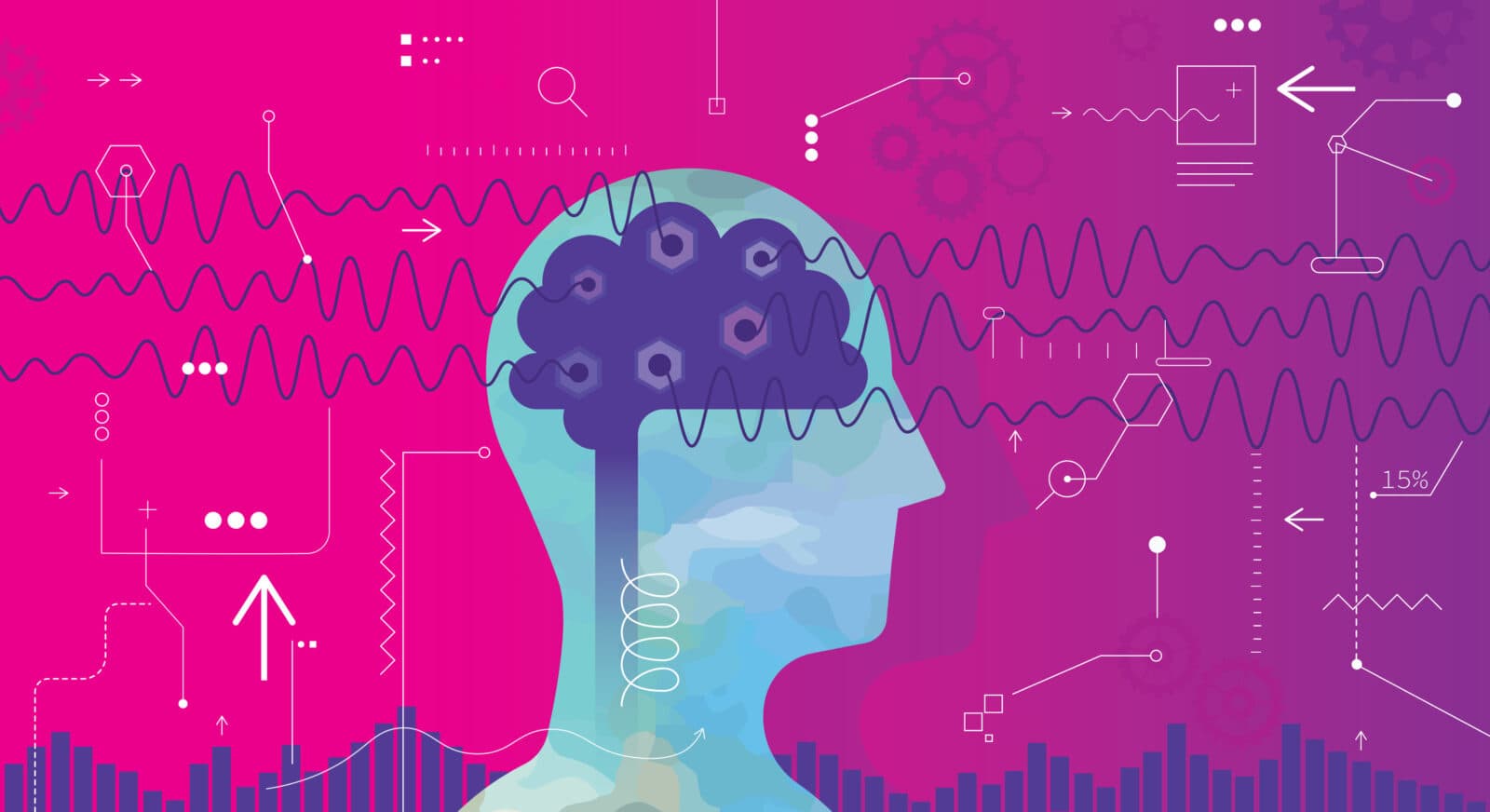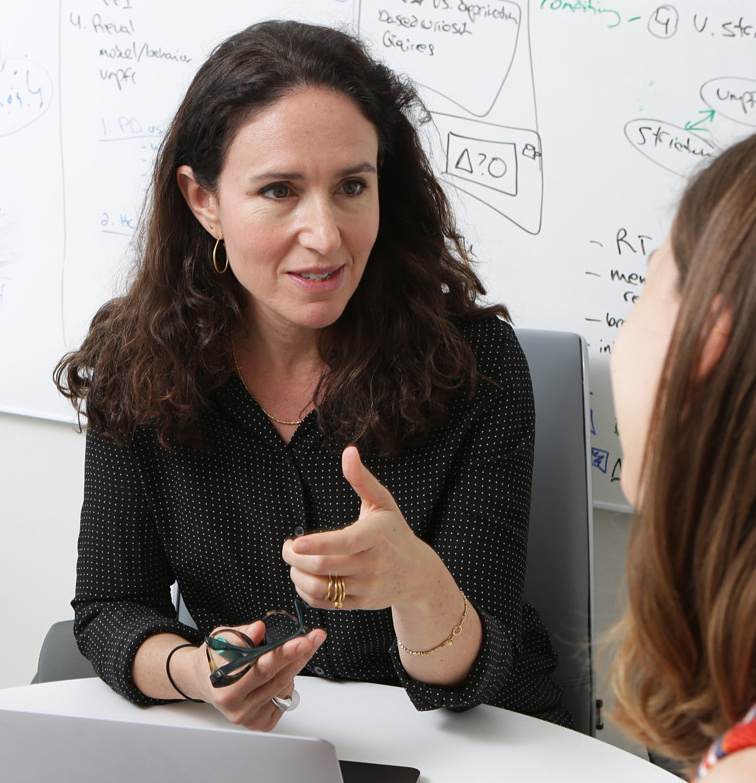The Intersection of Curiosity and Memory
by Sally Johnson
How Daphna Shohamy studies the brain mechanisms that drive information-seeking behavior

The Author
The Researcher
Daphna Shohamy, a professor of psychology at Columbia University and codirector of the Kavli Institute for Brain Science, specializes in exploring neural mechanisms underlying learning, memory, and decision-making in humans.
Shohamy’s lab studies how the human brain builds memories, learns from experiences, and makes decisions. This involves the area where learning and memory intersect with how our decisions are influenced by what we’ve experienced in the past.
Her work has shown how separate brain structures interact and work together to shape memory-guided decisions.

“Much of the early research on cognition focused on breaking down the modules of the mind into different components to understand how we see, smell, remember, or use language,” Shohamy says. “Some of the most exciting work in recent years has been reconnecting these aspects of the mind to understand how they influence each other and how they work together to give rise to thought and behavior.”
Shohamy recently became intrigued by how people seek information, which is one area where learning and making decisions intersect. We seek information based both on what we already know and our internal sense of what we don’t know and want to know.
When the COVID-19 pandemic hit, her lab saw the rare opportunity for a natural experiment about information seeking. It was decidedly “off the main path,” but the lab was shut down and they couldn’t collect any in-person data or do brain scans.
So in collaboration with Yaniv Abir, a graduate student in her lab, and colleague Ran Hassin, they ran a study administering questions online to nearly 6,000 participants in the U.S. for seven weeks, from mid-March to May 2020.
Their experiments gave participants the opportunity to seek information about the virus and also about general information, while also giving the lab the chance to explore the extent to which curiosity is driven by the search for knowledge for the sake of knowledge (as if it has no utility).
“There’s a learning component involved, but there’s also a motivational component: What’s driving us to seek information? In many ways this is a research program about curiosity, which is so fundamental to how scientists work,” she points out. “The desire to ‘know’ is a fundamental part of why we do what we do. We’re trying to understand the brain mechanisms that drive information seeking.”
Shohamy was interested in curiosity as a gateway to understand motivation and memory. Her research has shown that people have better memory for things they are curious about. “Curiosity even improves memory in older people who have worse memory overall,” she says.
When we retrieve a memory from the past, “it involves a constructive process much like imagining something in the future,” Shohamy says. “The brain’s organization and emerging findings are calling into question our basic assumptions about memory and what it’s for—demonstrating a link between the past and future.”
For their COVID-19 study, Shohamy’s lab asked participants useful questions about the virus, such as: What should you do if you develop a fever and suspect you have COVID?
They also asked trivia-type questions related to the virus, as well and as other general trivia or how-to questions completely unrelated to the virus.
Participants were asked if they wanted to wait for the answer to each question—ranging from 2 to 20 seconds. “We know people will wait longer for things they’re more curious about,” says Shohamy. “It gave us a measure of how long people will wait for information.”
Her lab also collected information about participants’ location within the U.S., whether they were under a lockdown, or were affected by the virus. “We also asked how concerned they were about the virus and how anxious they were in general,” Shohamy notes.
Participants most concerned about the virus, not surprisingly, were willing to wait for practical information about it. “They were also willing to wait for answers to trivia questions unrelated to the virus,” says Shohamy. “This suggests being in a motivational information-seeking mode was both useful for gathering relevant information, but also drove nonuseful exploration.”
This is not what they observed in people who were anxious in general, she adds, who were actually less interested in all types of information.
Their findings suggest a new understanding of how utility, motivation, and curiosity are all intertwined, which helps Shohamy’s lab understand memory. This study and others within her lab, regardless of COVID-19, suggest what we know and are concerned about shapes what we want to know, how hard we’re willing to work to obtain information, and determines what we’ll remember long term.
Shohamy sees opportunities emerging to expand or change way we explore behavior. “Even 10 years ago, this topic would have seemed off limits because we didn’t know enough to address something as ‘soft’ and ambiguous as curiosity,” she says. “But curiosity is a fundamental force in the behavior of humans and animals. The field is now on solid enough ground to start asking these kinds of questions rigorously.”
In another study, for example, Shohamy is collaborating with Eric Kandel, founding director of the Kavli Institute for Brain Science and a professor at Columbia University, as well as a Nobel laureate (2000) for his memory research. Together, they are exploring what happens within the brain when a person is looking at abstract art vs. representational art.
This work involves using functional magnetic resonance imaging (fMRI), which can probe the human mind in action—allowing the researchers to ask questions about circuits of the brain and how they work together to get a sense of networks and connectivity between them.
Now a few years in, Shohamy says this is an example of how neuroscientists can take ambitious questions about the human mind and make progress in understanding what’s happening within the brain and what the mechanisms are. “We’re not within five years of a breakthrough where everyone says ‘Ah yes, I understand how art works,’ but we’re beginning to understand it in ways we couldn’t before,” she adds.
Their work is beginning to identify distinct neural circuits that are engaged when people look at different kinds of art, and they’re linking these circuits to the kinds of decisions and evaluations people make about art.